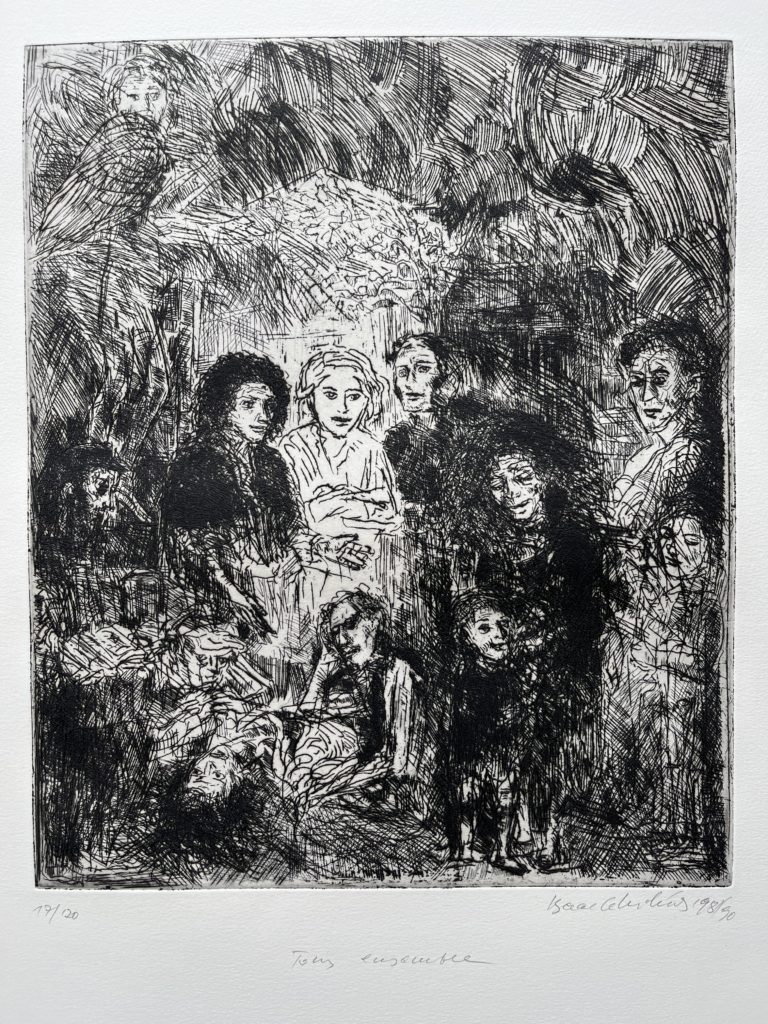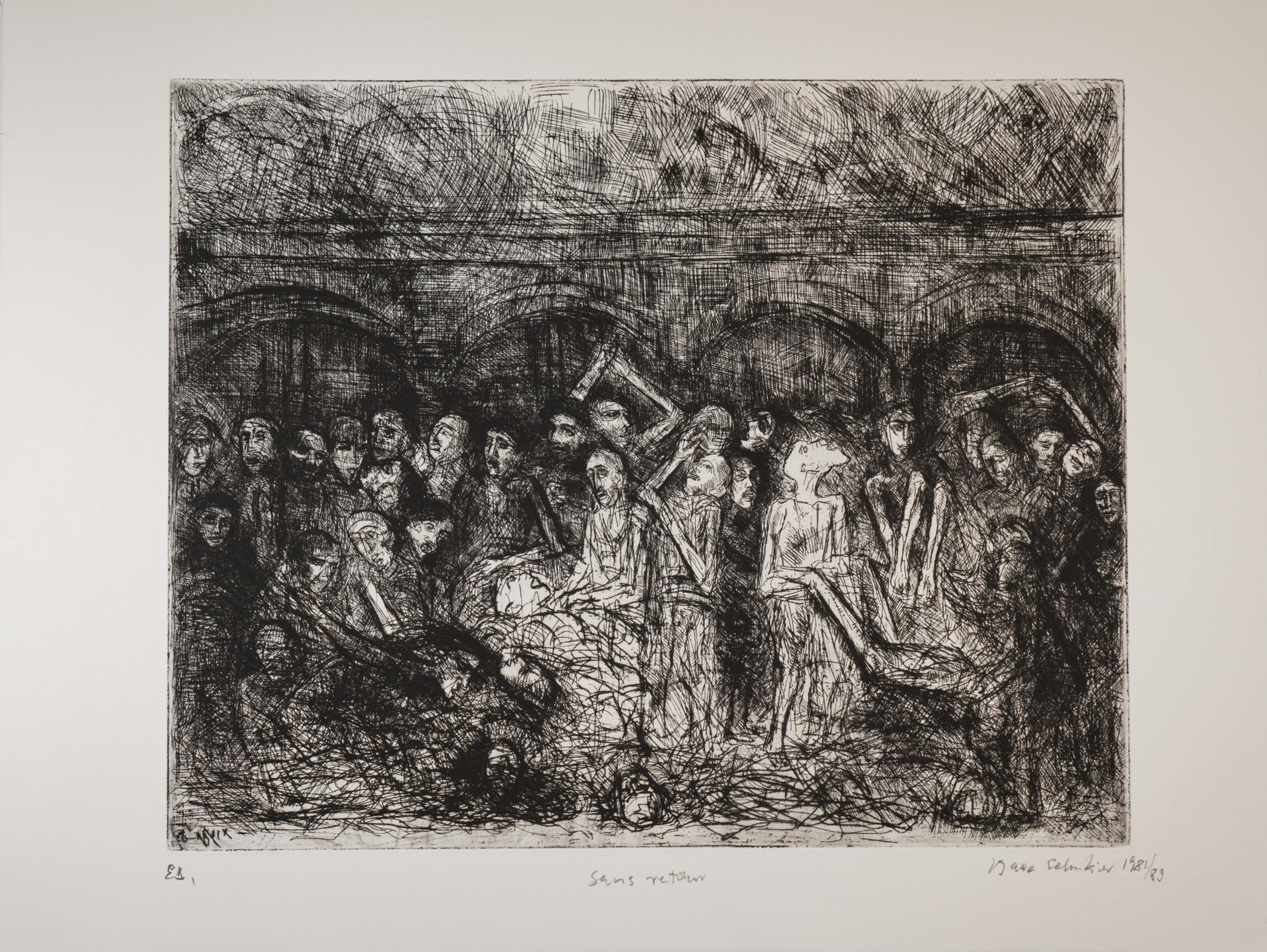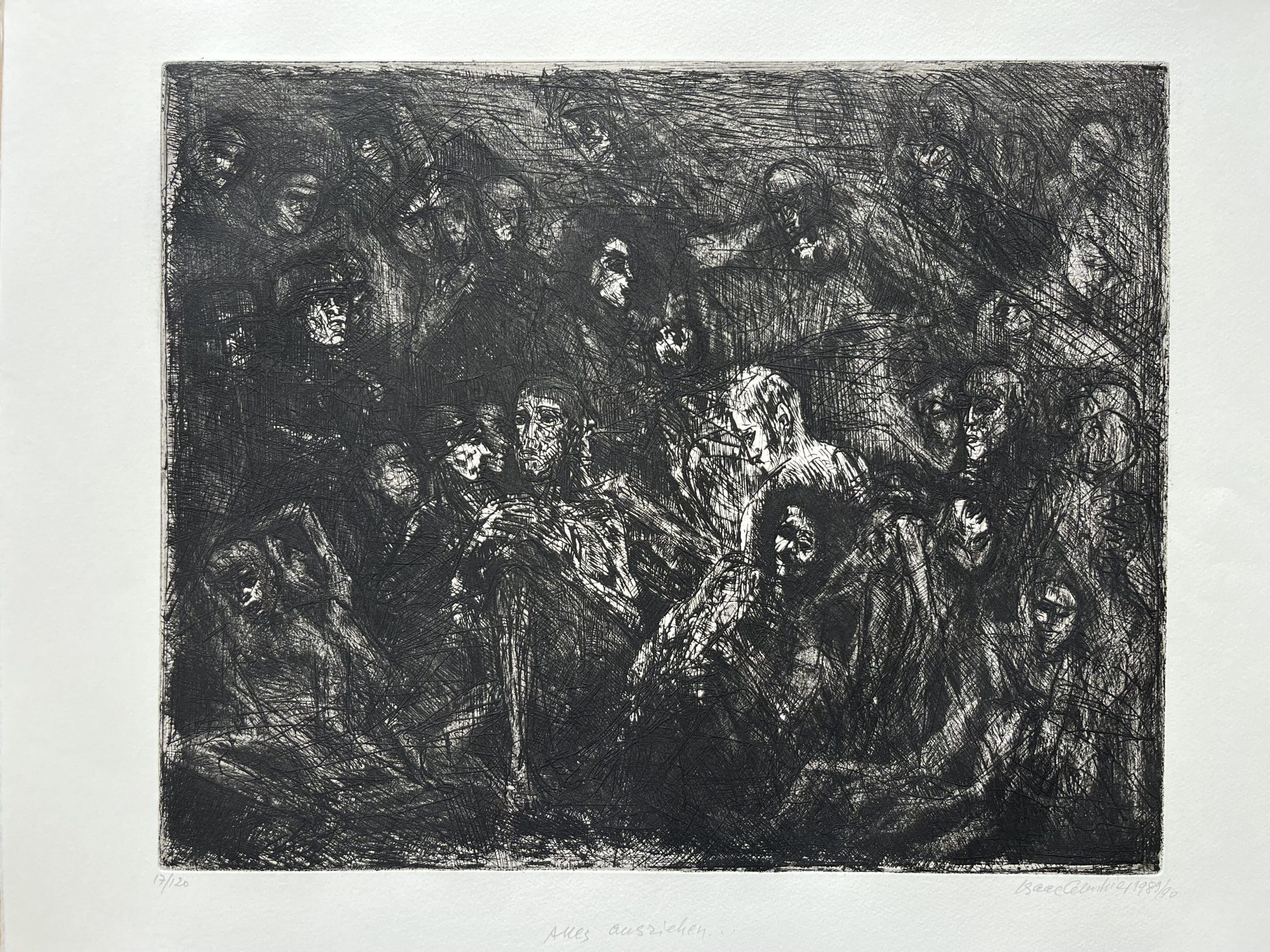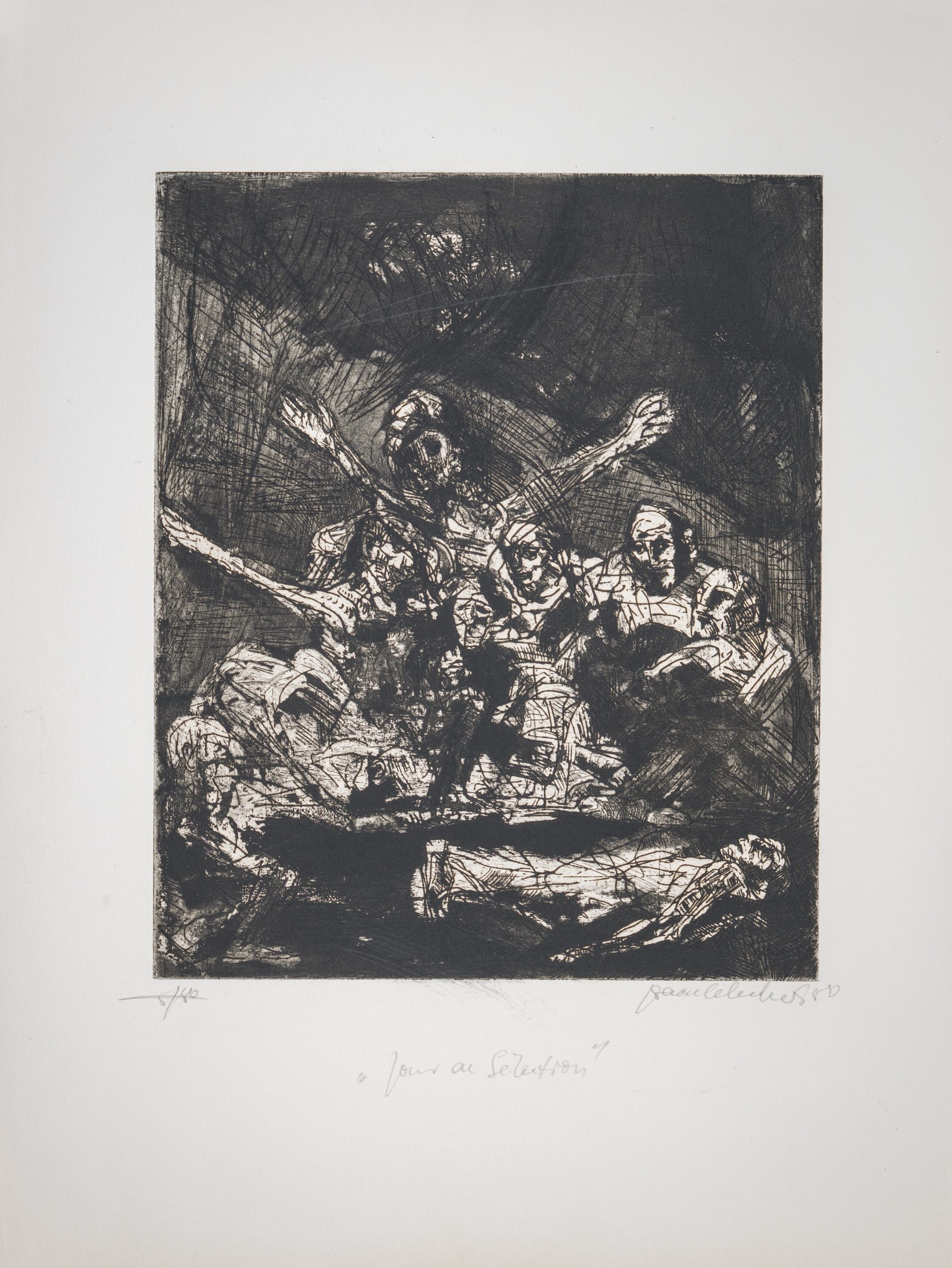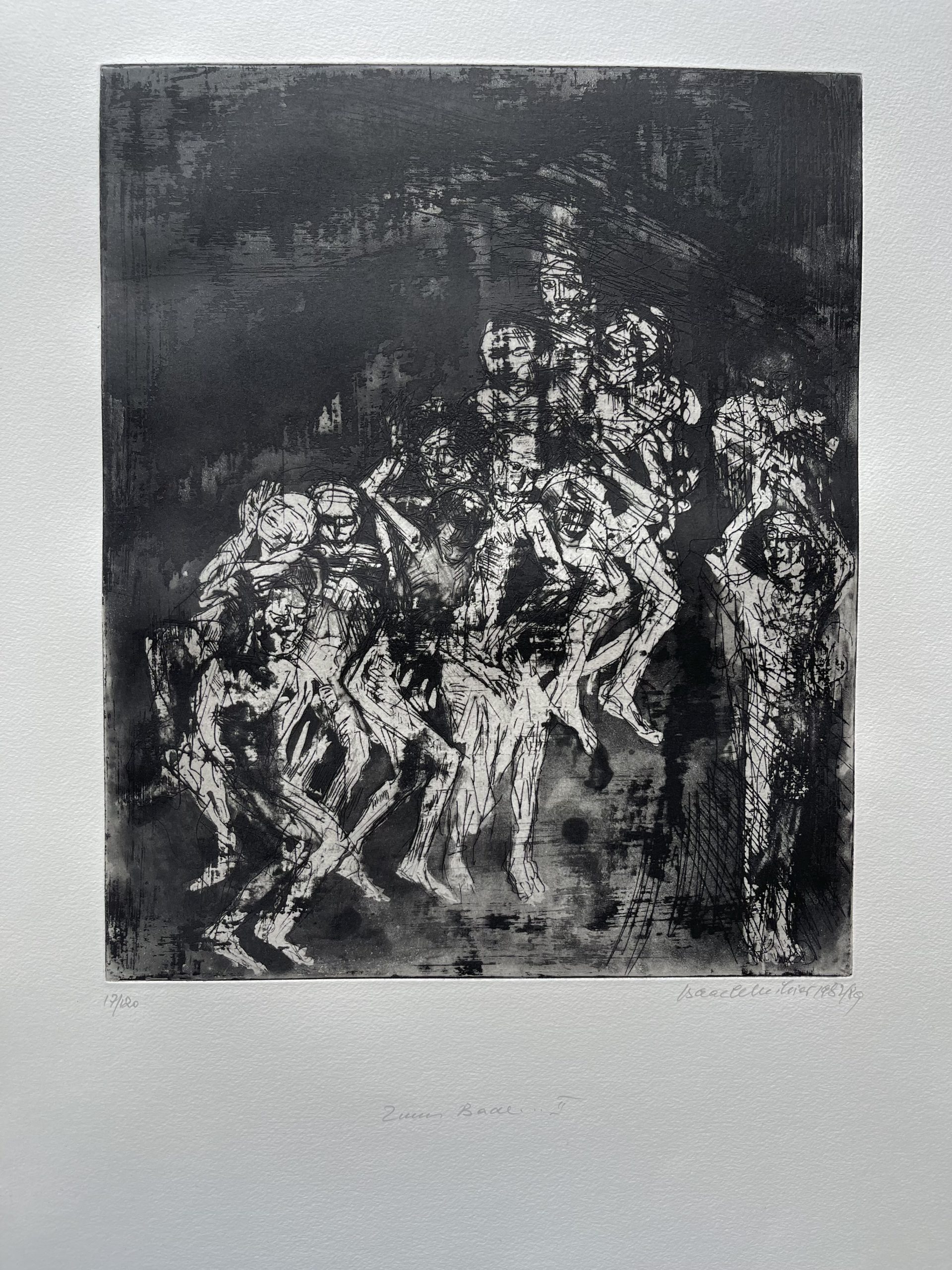The engraved memory
How can we forget? I don't know; if there's a cure, I'm not hostile. Let them give me the remedy; let them tell me !
Charlotte CHAPIRA, Auschwitz deportee
Forget, remedy, create ?
With his means – those, weak in the face of history, constituted by the practice of an art and knowledge of the history of this discipline – Isaac Celnikier does not show a limit; at least, he does not allow that which he shows to occupy in our space and our time a place and a moment that we could look at as objects. I look at his works; they challenge even my right to set myself up as a subject.
For more than twenty years, he hesitated to put into practice the post-war teachings he had received at the Beaux-Arts in Prague, perhaps wavering before the possibility of entrusting this modern conception of creation in art with the task of figuring what, for him, could not and should not be.
With these rejected means and this struggle against himself, he lived through the half-century from 1945 to the end of the 1990’s, advancing in the colours of his own material and technological triumphs, relegating tragedy to the sidelines with tragedy.
For some, it was a time to remember, for others to forget.
For Isaac Celnikier, it was the moment to switch from painting to engraving, to abandon his natural talent, his acquired pictorial powers, polychromy… to limit his aesthetic ambition to an imitation that would belong to him alone, and in a single movement, to purge copperplate engraving of the techniques it offers as well as the visual vertigo it promises.
Does this creative asceticism before us serve as a reminder of the balance between black and white in etching ?
Isaac Celnikier’s answer to the commonplace question of the second half of the 20th century: « Can we write – create – after Auschwitz ? » is not to draw « after » the event, but to work on the possibility of an aftermath, of memories worried by the absolute, vibrant and irreconcilable.
Isaac CELNIKIER - "The engraved memory"
« La mémoire gravée ». Set of drypoints and etchings printed and published in 1994 by Pierre LALLIER, director of L’ATELIER GEORGES LEBLANC, rue saint-Jacques, Paris 05.
24 original etchings, titled, numbered and signed by the artist, printed on Arches 50 x 65cm, presented in a box, and justified: 120 copies from 1 to 120, plus 25 E.A. numbered from I to XXV.
1 – Tous ensemble (40 x 33)
2 – Détresse (30 x 40)
3 – Massacre du 28 Juin 1941 (La synagogue – Byalistok) (40 x 50)
4 – Retour des torturés (40 x 33)
5 – Les fiancées juives (33 x 39)
6 – Otages du ghetto de Bialystok (Février 43). (33 x 40)
7 – Nuit de départ (33 x 40)
8 – Massacre du 16 Août 1943 (40 x 50)
9 – Gina Frydman (40 x 50)
10 – Lutte ( (33 x 40)
11 – Sans retour (40 x 50)
12 – Alles ausziehen* (40 x 50)
13 – Knieboige (Octobre 1943 arrivée à Stuthoff) (39 x 36)
14 – Zum Bade ! (33 x 40)
15 – Arrivée à Birkenau (40 x 50)
16 – Rasage – Tatouage (171870…) (40 x 50)
17 – Blocksperre** (40 x 33)
18 – Jour de sélection (40 x 33)
19 – Zum Bade ! (37 x 40)
20 – La fin de Janusz Korczach (39 x 33)
21 – L’abîme (40 x 33)
22 – Arrivée de Sachsenhausen (Février 45) (37 x 50)
23 – Moi parmi eux (Départ de Flosenburg Avriil 1945) (20 x 30)
24 – A travers les cimetières (40 x 50).
*Ausziehen : « déshabiller »
**Blocksperre : « couvre-feu »-

